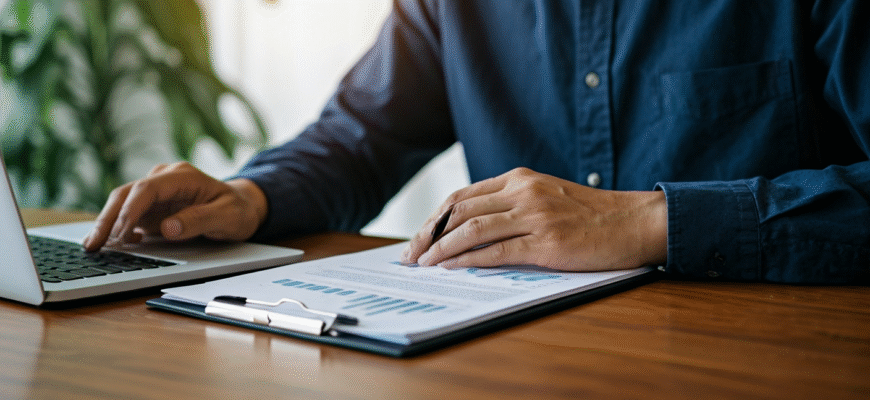Ever buy something online just because you were bored, annoyed, or having “a day”? Maybe it wasn’t even that expensive—$14 here, $22 there—but suddenly, your paycheck’s gone and all you really have to show for it is another unopened Amazon package and a bunch of algorithm-inspired “You might also like” suggestions. Welcome to the cycle. A no-spend month challenge exists to snap you out of that.
The Real Reason To Try A No-Spend Month
A no-spend month isn’t about going full monk or denying yourself every form of joy—it’s about hitting pause on your default spending patterns. The kind that happen while you’re not fully paying attention. Think of it less like a punishment and more like a reboot. For 30-ish days, you only spend on true essentials: rent, food staples, basic bills, medication, and transportation that you actually need. Everything else—from “I deserve this” takeout to your 4th streaming service—takes a seat.
Reframing it helps. It’s not about depriving yourself; it’s an intentional interruption. Most of our spending decisions happen automatically. Sales emails, “treat yourself” culture, thumb-hitting-buy in less than three seconds… it adds up. With a no-spend month, the aim is to override that autopilot mode.
It’s also a way to poke at emotional triggers. Are you buying because you’re sad, stressed, or seeking control? Are you still paying for a gym you haven’t seen since February? What happens when the IG ad shows up and you purposely don’t click “add to cart”? You start reclaiming your power. When algorithms no longer dictate how you move through your money, that’s a quiet kind of freedom.
Laying The Groundwork: Prepping For Mental, Emotional, And Digital Sabotage
Let’s keep it real. Resisting a Starbucks run feels easy when you read about it. Not so much when it’s 3 p.m. at work and you’re caffeine-deprived, emotionally fried, and someone in the group chat just suggested a coffee break. Before you even start your no-spend month, arm yourself with awareness. Here’s how to dig into the habits that might trip you up:
| Money Leaks | Why They Matter |
|---|---|
| Forgotten subscriptions | You think you’re spending $0, but $5.99 here and $11.99 there quietly drain your account |
| Impulse Amazon buys | You’re not buying what you need, you’re soothing discomfort |
| “Harmless” snacks and drinks | They add up weekly—and they’re usually about urgency not actual hunger |
Next, get curious—not judgmental—about your triggers. Start noticing patterns like:
- Emotional triggers: Boredom, comparison, loneliness, saying “I’ve had a rough week so I deserve this”
- Time-based urges: Monday blues, Sunday scaries, Friday “I made it through the week” spending
- Digital manipulation: Instagram ads, “only 5 left” messages, Amazon’s “buy it again” button after a bad night
Biggest mindset shift? Defining what “enough” looks like for you. That doesn’t come from a spreadsheet. It comes from checking in with what actually satisfies you. Rest doesn’t have to be a $24 candle or a bottle of wine. Enough could mean cooking something nourishing, doing something hands-on, or just sitting still without guilt.
Ask yourself: Do you genuinely enjoy this purchase—or is it numbing you after a long week? Are you looking for connection or convenience? When you can tell the difference, it’s easier to say “no” without the voice in your head calling you cheap, boring, or missing out.
Building Your Boundaries + Backup Plan
Design your own guidelines like it’s your personal challenge—not a punishment. Get clear on what spending is allowed (groceries, bills, urgent needs) and what’s a no-go (dining out, impulse decor, memberships you haven’t touched in months). The grey areas? Decide now. Better to know if a friend’s birthday dinner gets a pass—or if you’re offering a thoughtful, homemade workaround.
Some boundary hacks to make this thing stick:
- 24-hour rule: Wait a full day before buying anything unplanned
- Wishlist strategy: Add it to a “wants list” and revisit next month
- Screenshot + hold: Take a screenshot of the item and revisit why you wanted it later
Substitute gently—don’t go cold turkey. Replace online scrolls with a playlist, a walk, or a podcast. If stress draws you to Amazon, prep alternatives like journaling, texting a friend, or making tea. It’s not just about what you’re cutting—what you’re adding instead matters just as much.
None of it’s about being perfect. It’s about being honest with yourself—and rewriting the script that says you always need to buy something to feel better.
The First Week: The Withdrawal Hits Different
Ever stared at your checkout cart just to feel—something? That dopamine jolt from hitting “buy now” doesn’t just disappear overnight. The first few days of a no-spend month feel weird. Like walking into silence after nonstop background music. And yes, it messes with your mood. Expect to feel irritated, anxious, even bored out of your mind.
This isn’t just about money. It’s about breaking assumptions.
- Remove the triggers: Take your cards off autofill. Delete retail apps. Log out of “one-click” sites like Amazon or UberEats. Let it be inconvenient on purpose.
- Break the emotional loop: Ask what story you’re telling yourself when you justify that new candle or takeout hit. “I earned it” or “I just want to feel okay” are scripts, not needs.
Small wins matter here. Didn’t order that late-night Uber Eats? That’s a win. Scrolled through new shoes and closed the tab instead? Screenshot that empty cart. Save the image. These little “I chose not to” moments stack up—and retrain your brain faster than any budgeting app ever could.
Midpoint Reset: Where the Magic Starts
This is where it stops being painful and starts getting… interesting. By the second or third week, some unexpected freedom kicks in. With constant spending decisions off your plate, you start gaining something back: time, focus, energy.
Your screen doesn’t feel like a battlefield of ads anymore. You’re seeing fewer notifications, making fewer calls to justify “just one dinner out,” and you actually feel it—more clarity and less internal buzzing.
It’s not just savings on paper. In your banking app, you’re watching expenses slow down. You might even annoy yourself less. Really. With fewer micro-purchases, every buy becomes a conscious decision instead of a reflex click.
- Creativity sneaks back in: You might start inventing meals from pantry leftovers or finally practicing that instrument collecting dust since 2022.
Someone reposts yet another brunch pic and you don’t even flinch. You’re in your own lane now—figuring out how to make joy without swiping for it.
What Actually Changes in Your Brain and Routine
No one talks about this part: your brain actually rewires a little. At the start, you were dopamine-chasing through online carts and caffeine runs. Now, something shifts. You start craving the quiet wins instead.
Turns out novelty and buying give us artificial highs. But over time, your brain gets less needy. When you stop chasing little hits, your internal compass recalibrates.
- Your reward system goes legit: Instead of that credit-card buzz, you get real joy from finishing tasks, meaningful convos, or even just having a calm moment without distraction.
New habits grow here—slow, subtle, and sticky. Making coffee at home becomes a daily ritual, not a makeshift “savings tactic.” Friday’s Netflix-and-peace feels better than noisy dinners out. Suddenly, you’re less reactive to urges. The shame spirals shrink, and reflection steps in. You don’t just feel more in control—
—you are.








